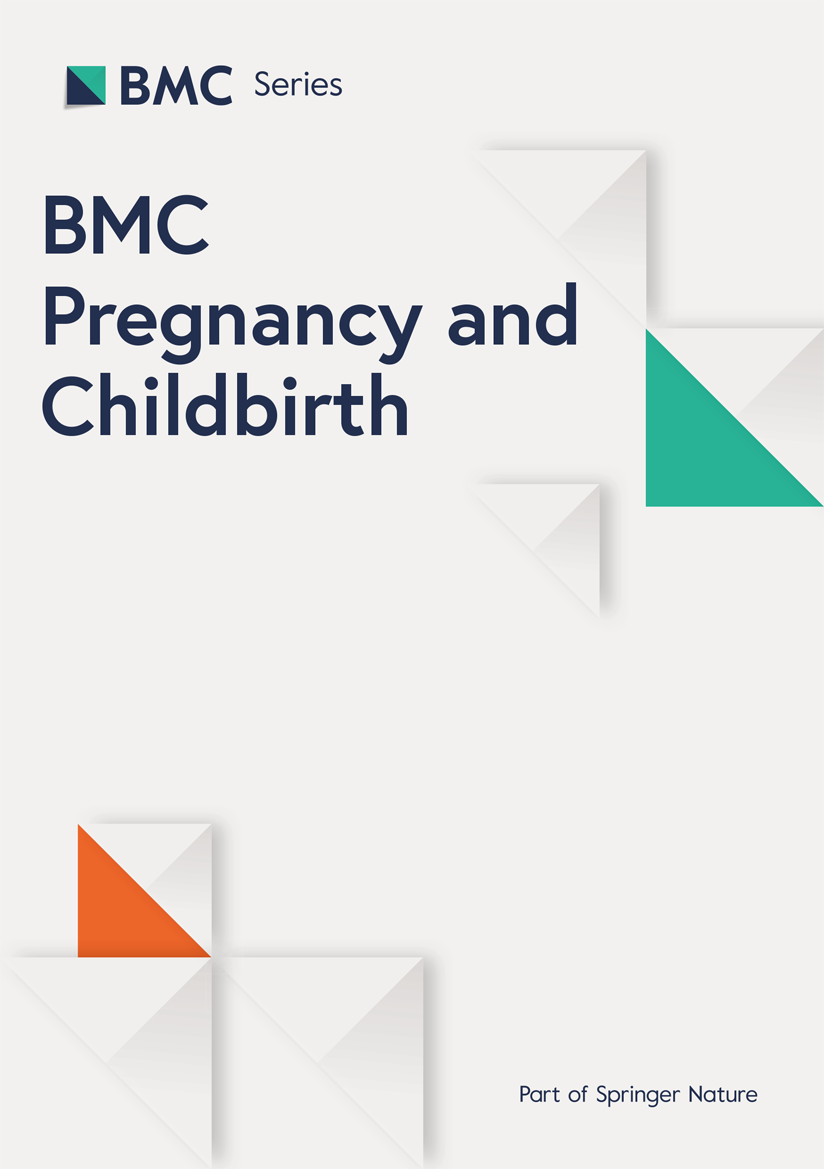Sero-prevalence of hepatitis b virus infection and its associated factors among pregnant women attending antenatal care at public health facilities in Babile district, Eastern Ethiopia – BMC Pregnancy and Childbirth

Report on Hepatitis B Virus Elimination Strategies and Alignment with Sustainable Development Goals
Introduction: Framing HBV Control within the 2030 Agenda
The global effort to combat Hepatitis B Virus (HBV) is intrinsically linked to the United Nations’ 2030 Agenda for Sustainable Development. This report synthesizes current research to highlight the critical role of HBV prevention and management in achieving key Sustainable Development Goals (SDGs), primarily SDG 3 (Good Health and Well-being), which explicitly targets the elimination of viral hepatitis by 2030. Furthermore, addressing HBV infection, particularly among pregnant women, directly supports SDG 5 (Gender Equality) by safeguarding maternal and child health, and contributes to SDG 10 (Reduced Inequalities) by tackling health disparities in high-burden regions like Africa.
Global Burden and Strategic Frameworks for HBV Elimination
The Global Health Challenge of HBV Infection
Hepatitis B remains a significant public health threat, contributing to a substantial global burden of liver disease. Research indicates that primary liver cancer resulting from chronic HBV infection has increased in over one-third of countries between 2000 and 2021 (Danpanichkul et al., 2025). The global epidemiology of HBV infection underscores the urgent need for robust public health interventions (Papastergiou et al., 2015).
International Commitments and WHO Guidelines
The World Health Organization (WHO) has established global health sector strategies to guide the elimination of viral hepatitis (WHO, 2022). Analysis of member state responses indicates ongoing global progress, though significant challenges remain (Smith et al., 2019). The recent WHO 2024 guidelines provide a demystified, updated framework for the management of Hepatitis B, serving as a critical tool for nations to align their health policies with SDG 3 targets (Spearman, 2024).
Regional Focus on Africa: Addressing Health Disparities (SDG 10)
HBV Elimination Status and Challenges in Africa
Africa faces significant disparities and challenges in the path toward HBV elimination (Sonderup & Spearman, 2022; Sonderup & Spearman, 2024). Systematic reviews and meta-analyses confirm a high prevalence of HBV infection across the continent, including among pregnant women (Larebo et al., 2024). Studies focusing on East Africa further detail the prevalence and predictors of infection, highlighting the region as a key area for targeted interventions (Kafeero et al., 2021).
National Strategic Responses
In response to this challenge, countries are developing national strategic plans. For example, Ethiopia’s National Strategic Plan for the Prevention and Control of Viral Hepatitis (2021–2025) represents a crucial national commitment to achieving the global elimination goals and contributing to SDG 3 (FMoH_E, 2021). These plans are essential for coordinating national efforts in screening, vaccination, and treatment.
Protecting Future Generations: HBV in Pregnant Women and Children (SDG 3 & SDG 5)
Seroprevalence Among Pregnant Women
A substantial body of research focuses on the seroprevalence of HBV among pregnant women, a critical population for preventing generational transmission. Studies from various African nations reveal a consistently high burden:
- Ethiopia: Multiple systematic reviews and cross-sectional studies have documented the prevalence and associated factors among pregnant women across different regions, including Hararghe, Gedeo Zone, and Bahir Dar, underscoring the endemic nature of the virus (Asgedom et al., 2024; Bitew et al., 2025; Umer et al., 2023; Tadiwos et al., 2021; Zenebe et al., 2014).
- Somalia: Research in Mogadishu highlights the sero-prevalence and risk factors in antenatal clinics (Mohamud et al., 2025).
- Nigeria: Numerous studies from locations such as Osogbo, Keffi, and Anyigba confirm a high prevalence of HBV surface antigenemia among pregnant women (Kolawole et al., 2012; Pennap et al., 2011; Omatola et al., 2019).
- Other Regions: Similar findings have been reported in Ghana, Kenya, South Sudan, and Cameroon, reinforcing the need for continent-wide antenatal screening programs (Dortey et al., 2020; Ngaira et al., 2016; Kirbak et al., 2017; Frambo et al., 2014).
Preventing Mother-to-Child Transmission (MTCT)
Eliminating the vertical transmission of HBV is a cornerstone of the global elimination strategy and directly supports the health of women and children (SDG 3 and SDG 5). Progress toward the elimination of MTCT is being monitored globally and within the WHO African Region (Khetsuriani et al., 2022; Kabore, 2023). Key interventions include:
- Universal screening of pregnant women.
- Timely administration of the HBV vaccine birth dose, an intervention whose cost-effectiveness has been evaluated in settings like Ethiopia (Memirie et al., 2020).
- Antiviral therapy for eligible pregnant women to reduce the risk of transmission (Guo et al., 2010).
A renewed global focus on eliminating MTCT of HIV, syphilis, and viral hepatitis B is essential for achieving the 2030 targets (Elgalib et al., 2023).
Identifying and Mitigating Risk Factors for HBV Transmission
Associated Risk Factors in Vulnerable Populations
Numerous studies have identified factors associated with an increased risk of HBV infection. A comprehensive prevention strategy must address these risks to reduce community transmission. Common factors include:
- History of blood transfusion (Candotti & Allain, 2009; Yooda et al., 2019).
- Multiple sexual partners (Roble et al., 2021).
- Invasive medical or cosmetic procedures (Deng & Pan, 2023).
- History of abortion or home delivery (Umer et al., 2023).
- Family history of HBV infection (Molla et al., 2015).
- Lack of awareness about HBV transmission (Ngaira et al., 2016).
Conclusion: A Call for Integrated Action to Achieve SDG Targets
The elimination of Hepatitis B is a public health imperative and a measurable indicator of progress toward the Sustainable Development Goals. Achieving the 2030 targets requires an integrated approach that combines high-level political commitment, as seen in national strategic plans, with on-the-ground implementation of WHO guidelines. Strengthening antenatal screening programs, ensuring universal access to birth-dose vaccination, and addressing regional health disparities are critical actions. By focusing on preventing mother-to-child transmission and mitigating risk factors in the wider community, the global community can make significant strides in achieving SDG 3, promoting SDG 5, and advancing SDG 10, ensuring a healthier future for all.
Analysis of Sustainable Development Goals in the Article
1. Which SDGs are addressed or connected to the issues highlighted in the article?
-
SDG 3: Good Health and Well-being
This is the primary SDG addressed. The entire list of references focuses on the public health challenge of Hepatitis B Virus (HBV). The titles consistently refer to the management, prevalence, epidemiology, control, and elimination of HBV, which is a major global health issue. Specific articles mentioned, such as “Demystifying the management of hepatitis B” (Ref 1), “Global burden of HBV-related liver disease” (Ref 2), and “Global progress on the elimination of viral hepatitis as a major public health threat” (Ref 3), directly align with the goal of ensuring healthy lives and promoting well-being for all at all ages.
2. What specific targets under those SDGs can be identified based on the article’s content?
-
Target 3.3: By 2030, end the epidemics of AIDS, tuberculosis, malaria and neglected tropical diseases and combat hepatitis, water-borne diseases and other communicable diseases.
This target is central to the article’s theme. Numerous references explicitly discuss combating and eliminating hepatitis. For instance, “HBV elimination in Africa—Current status and challenges” (Ref 5) and “Global progress on the elimination of viral hepatitis” (Ref 3) directly address the goal of ending the hepatitis epidemic. The extensive research on the “prevalence” and “sero-prevalence” of HBV in various populations (Refs 4, 9, 10, 11, 12, 13) is fundamental to monitoring and combating the disease.
-
Target 3.2: By 2030, end preventable deaths of newborns and children under 5 years of age.
The article strongly connects to this target through its focus on mother-to-child transmission (MTCT) of HBV. Preventing vertical transmission is crucial for preventing chronic HBV infection and subsequent liver disease in children. References such as “Vertical transmission of hepatitis B virus: challenges and solutions” (Ref 6), “Progress toward hepatitis B control and elimination of mother-to-child transmission of hepatitis B virus” (Ref 7), and “Survey of HBsAg-positive pregnant women and their infants regarding measures to prevent maternal-infantile transmission” (Ref 19) highlight the efforts to protect newborns and infants from this preventable cause of lifelong illness and premature death.
-
Target 3.4: By 2030, reduce by one third premature mortality from non-communicable diseases through prevention and treatment and promote mental health and well-being.
Chronic HBV infection is a leading cause of non-communicable diseases like cirrhosis and liver cancer. The article addresses this target by implication. Reference 2, “Global burden of HBV-related liver disease: primary liver cancer due to chronic HBV infection increased…”, directly links HBV to a major non-communicable disease. By focusing on the prevention and management of HBV, the research contributes to reducing premature mortality from these long-term complications.
-
Target 3.b: Support the research and development of vaccines and medicines for the communicable and non-communicable diseases that primarily affect developing countries…
This target is supported by references discussing vaccination as a key strategy. Reference 17, “Global perspective on hepatitis B virus infections in the era of effective vaccines,” underscores the importance of vaccination. Furthermore, Reference 31, “Introduction of birth dose of hepatitis B virus vaccine to the immunization program in Ethiopia: an economic evaluation,” directly discusses the implementation and evaluation of vaccination programs, which is a core component of this target.
3. Are there any indicators mentioned or implied in the article that can be used to measure progress towards the identified targets?
-
Indicator 3.3.4: Hepatitis B incidence per 100,000 population.
This indicator is strongly implied throughout the article. The numerous studies on “prevalence” and “sero-prevalence” of HBV (e.g., Refs 4, 9, 10, 11, 12, 13, 15, 16, and many others) are essential for estimating the burden of disease and tracking incidence over time. These studies provide the baseline data needed to measure progress towards combating hepatitis.
-
Indicator 3.b.1: Proportion of the target population covered by all vaccines included in their national programme.
The article implies this indicator through its focus on preventing mother-to-child transmission, for which the birth dose of the HBV vaccine is critical. Reference 31, which evaluates the “Introduction of birth dose of hepatitis B virus vaccine to the immunization program in Ethiopia,” directly relates to the measurement of vaccine coverage. Similarly, references discussing the “elimination of mother-to-child transmission” (Refs 7, 23, 32) depend on high vaccine coverage rates for newborns.
-
Vertical Transmission Rate
While not an official SDG indicator by name, the “vertical transmission rate” is a crucial programmatic indicator used to measure progress towards Target 3.2. Reference 22 explicitly mentions measuring the “vertical transmission rate within 24 months after birth.” Tracking this rate is a direct measure of the success of interventions aimed at preventing HBV transmission from mother to child.
4. SDGs, Targets, and Indicators Table
| SDGs | Targets | Indicators |
|---|---|---|
| SDG 3: Good Health and Well-being | Target 3.3: Combat hepatitis and other communicable diseases. | Indicator 3.3.4: Hepatitis B incidence per 100,000 population (implied by the numerous studies on “prevalence” and “sero-prevalence” of HBV, e.g., Refs 4, 9, 10, 11). |
| Target 3.2: End preventable deaths of newborns and children under 5 years of age. | Vertical Transmission Rate: A key programmatic indicator for measuring the success of preventing mother-to-child transmission (explicitly mentioned in Ref 22). | |
| Target 3.4: Reduce premature mortality from non-communicable diseases (like liver cancer). | Rates of primary liver cancer due to chronic HBV infection (as discussed in Ref 2). | |
| Target 3.b: Support research and development of vaccines and medicines. | Indicator 3.b.1: Proportion of the target population covered by all vaccines included in their national programme (implied by studies on the introduction of the birth dose vaccine, e.g., Ref 31). |
Source: bmcpregnancychildbirth.biomedcentral.com
What is Your Reaction?
 Like
0
Like
0
 Dislike
0
Dislike
0
 Love
0
Love
0
 Funny
0
Funny
0
 Angry
0
Angry
0
 Sad
0
Sad
0
 Wow
0
Wow
0
















































:focal(1500,1000)/https://media.globalcitizen.org/a6/9a/a69a4720-d8a1-4715-b596-18738d03c05c/rotary_polio_hero_image.jpg?#)







/countries/sri-lanka/photo-credit---dmc-sri-lanka.tmb-1200v.jpg?sfvrsn=dc298bcc_1#)


















